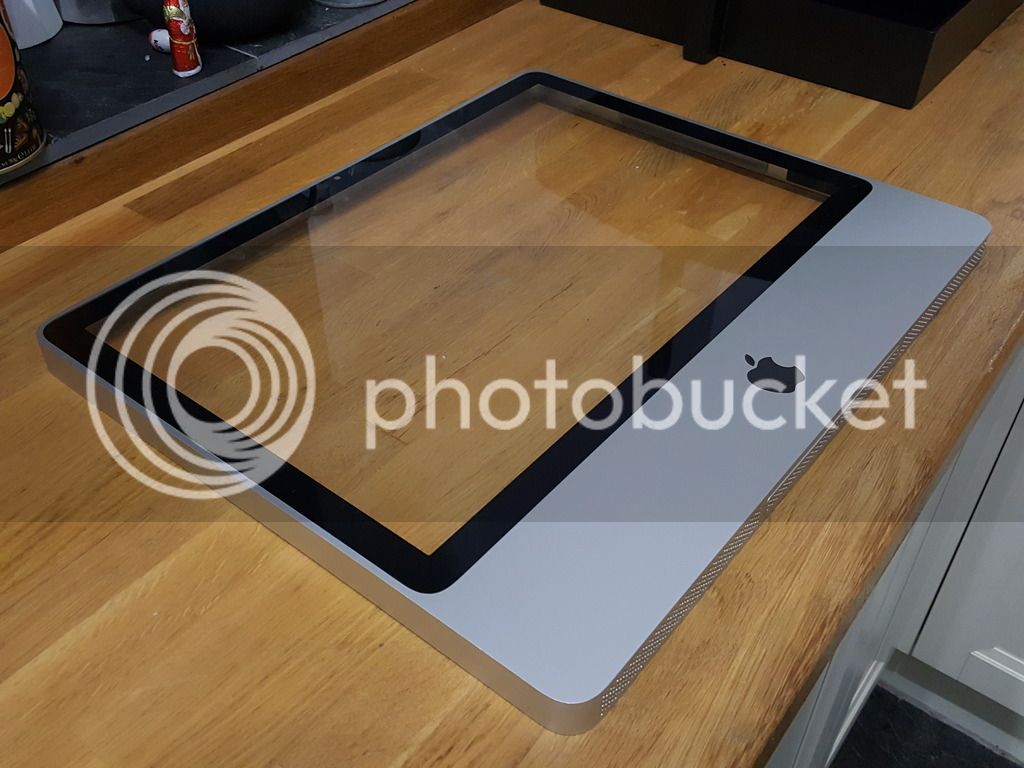So I came up with a 'radical' idea to turn my old and very dead iMac Computer into a magnetic note board. Having never used wood veneer before (I'm brand new to woodworking), I was slightly confused when it arrived as to how brittle and irregular the surface is, and how I could apply it without it breaking.
To give an idea on my plan, I have removed the LCD, computer parts and back/stand, so that I'm just left with the front frame and the glass (pictured). The plan is to cut and stick the veneer onto a thin steel sheet, which will in turn be placed on the inside surface of the glass - with the veneer facing outwards.
Can anyone give me some tips on how to cut, flatten and stick the veneer to a steel sheet? I'll update the post with pictures as it progresses as it either could turn out quite cool, or exceedingly bad.

To give an idea on my plan, I have removed the LCD, computer parts and back/stand, so that I'm just left with the front frame and the glass (pictured). The plan is to cut and stick the veneer onto a thin steel sheet, which will in turn be placed on the inside surface of the glass - with the veneer facing outwards.
Can anyone give me some tips on how to cut, flatten and stick the veneer to a steel sheet? I'll update the post with pictures as it progresses as it either could turn out quite cool, or exceedingly bad.







